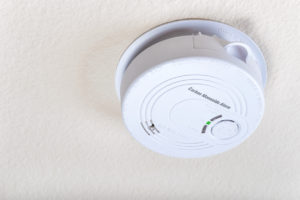 Major national safety organizations now agree that carbon monoxide detectors are every bit as essential to home safety as smoke detectors.
Major national safety organizations now agree that carbon monoxide detectors are every bit as essential to home safety as smoke detectors.
Carbon monoxide gas (CO) kills an average of 430 Americans every year and about 20,000 more require emergency hospital treatment due to accidental exposure. The sad fact is, most never recognized the danger nor realized they were being poisoned—even while it was happening.
The Silent Threat
Carbon monoxide gas is odorless, colorless and tasteless. At low levels, symptoms of CO poisoning may mimic common maladies including simple fatigue or a case of the flu. The concentration of carbon monoxide gas that triggers low-grade illness versus the amount which causes rapid death is quite small and can occur rapidly inside an enclosed structure. While two hours of exposure to 100 parts per million (ppm) of carbon monoxide may cause a headache, prolonged exposure to just 150 ppm to 200 ppm can cause disorientation, unconsciousness and death.
Common Sources
Carbon monoxide gas is an inevitable byproduct of combustion. It may originate from gas-fired stoves, furnaces, water heaters, internal combustion engines and other common sources that burn fuel, including wood-burning fireplaces. When these sources are properly vented to the outdoors, the hazard is neutralized. When fumes from combustion accumulate indoors, however, the result can be deadly.
How Many Detectors And Where?
The United States Fire Administration recommends the following placement of carbon monoxide detectors:
One on each level of the home, including the basement.
One near every sleeping area.
One near the entry to an attached garage.
Carbon monoxide detectors sense presence of CO gas most effectively when they are placed about five feet from the ground. Batteries in battery-powered units should be replaced every six months and the alarm function in all units should be regularly tested—ideally, once a month—by pushing the “Test” button on the face of the unit. Most detectors are good for 5 to 7 years and should be replaced with a new unit before that time frame elapses.
For more about the vital importance of carbon monoxide detectors to safeguard your family, contact Hartman Brothers.
Our goal is to help educate our customers in New Haven, Indiana and surrounding Fort Wayne area about energy and home comfort issues (specific to HVAC systems). For more information about other HVAC topics, download our free Home Comfort Guide or call us at 260-376-2961.
